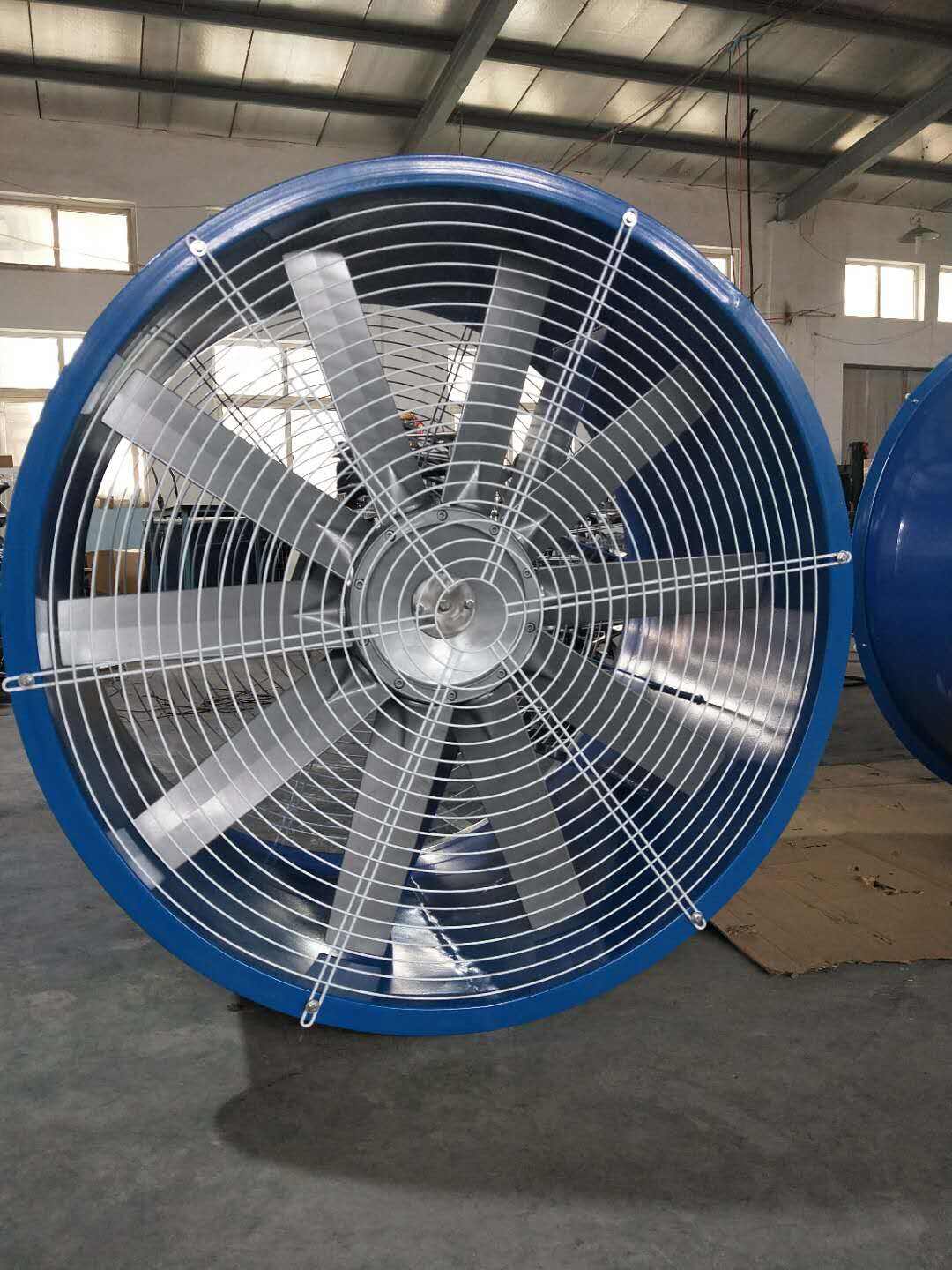Key Factors Impacting Axial Flow Fan Efficiency
Aerodynamic Design & Blade Geometry
How well axial flow fans work depends a lot on their aerodynamic design and what the blades look like. When designers get the aerodynamics right, there's less resistance against the airflow, which means less pressure loss and better performance overall. Blade shape matters too, along with how long they are. These factors decide whether the fan moves air effectively or just sits there wasting energy. Some studies show that tweaking the angle of those blades can actually increase airflow by about 20%. That kind of improvement really shows why getting the design details correct makes such a difference. What people often overlook is the material used for the blades themselves. The choice affects both weight and how long the fan will last before needing replacement. Finding the right balance between lightweight materials and something durable enough to handle different working conditions becomes essential if we want these fans to keep moving air efficiently day after day.
Motor Efficiency & Power Consumption
How efficient a motor runs plays a big role in controlling power use for axial flow fans. Motors that work better actually cut down on energy spending quite a bit sometimes over 30% according to studies from the US Department of Energy. Keeping track of this efficiency matters a lot when looking at costs over time because finding the right balance between how much power something uses versus what it delivers makes all the difference. When companies pick the right sized motor for their specific fan needs, they avoid wasting electricity which extends how long the fan lasts and keeps running costs reasonable. For businesses that depend on good airflow systems whether in manufacturing plants or commercial buildings getting this balance right saves money and ensures things run smoothly day after day.
System Resistance & Ductwork Configuration
When it comes to axial flow fans, system resistance and how ducts are laid out really affect how efficient these systems run. Most of the time, resistance happens because ducts aren't designed properly, which causes significant drops in efficiency. Getting the duct layout right matters a lot too. Good duct design reduces turbulence and keeps pressure from dropping off so much. Industry data shows that when companies get their duct sizes and lengths just right, they typically see around a 15% boost in airflow efficiency. Maintenance teams should check duct systems regularly for problems. Finding issues early means fixing them before they become big headaches. Taking this kind of hands-on approach makes sure ventilation and cooling systems work at their best without wasting extra energy on the side.
Optimization Strategies for Enhanced Performance
Blade Angle Adjustments for Improved Airflow
Changing the blade angles on axial flow fans really makes a difference when it comes to how well air moves through a space. Some big name companies did tests showing that tweaking those angles just right helps airflow work better, especially important stuff like proper ventilation in buildings. Getting this right matters a lot for places where exact air control is needed, think about kitchen hoods or bathroom fans in homes. Most fan makers actually give pretty detailed instructions about what angle works best for different situations, so people can get their fans running at peak performance without guessing around.
Upgrading to High-Efficiency Motors
Switching to high efficiency motors makes a real difference when it comes to boosting how well axial flow fans perform. These newer motors save quite a bit on energy bills, usually paying for themselves in around 2-3 years give or take depending on usage. Less power consumption means money stays in the pocket instead of going out the door, plus it helps check off those sustainability boxes that so many buildings need nowadays. Another bonus? Maintenance becomes less frequent than before. Industrial plants especially benefit from this since they run their equipment non stop. We've seen factories cut down on downtime by almost half after making the switch.
Maintenance Practices for Sustained Efficiency
Dust Accumulation & Cleaning Protocols
When dust builds up inside fans, it really messes with how well they work, making them consume more electricity and wear out faster than normal. Regular cleaning makes all the difference in keeping these devices running efficiently and lasting longer over time. Research shows that when people stick to proper cleaning routines, fans tend to stay around 90-95% efficient most of the time. A consistent maintenance schedule helps fans perform better while also giving them a longer useful life, which saves money on replacements and cuts down wasted energy in the long run. The cleaning process needs to cover every part someone can reach on the fan unit, with special attention paid to those tricky blade surfaces and the motor housing areas where grime tends to collect. For places where good airflow matters most like server rooms or commercial kitchens, this kind of maintenance becomes absolutely necessary to prevent overheating problems and maintain safe working conditions.
Bearing Lubrication & Vibration Analysis
Keeping fan bearings properly lubricated remains one of the most important things anyone can do for their equipment. When done right, this simple task adds years to the life of fans while making them run quieter too. Lubrication keeps everything moving smoothly and stops those expensive parts from wearing out prematurely. Vibration analysis should be part of any good maintenance routine as well. Checking these vibrations helps spot problems before they become big headaches, such as when something starts spinning off center or showing early signs of damage. During normal checkups, technicians look at how much vibration exists so they can fix whatever might be causing it before it breaks down completely. Taking this kind of hands-on approach cuts down on unexpected stoppages and keeps air flowing consistently through factories and plants where proper ventilation matters most for safety and efficiency reasons.
Energy-Efficient Technologies in Modern Systems
Variable Frequency Drives (VFDs) for Dynamic Control
VFDs give operators control over fan speeds according to what the air actually needs at any given moment, which really boosts overall efficiency. When fans run only as fast as they need to meet current demands, these drives can cut energy costs by around half, especially when dealing with changing load conditions throughout the day. The energy savings are so good that most modern ventilation systems now include VFDs as standard equipment because saving power has become such a big deal for facility managers. Most installations go pretty smoothly too. Retrofitting older systems typically doesn't involve tearing things apart or making huge structural modifications. Just plug them in and watch the performance improve without much hassle or downtime.
Smart Cooling Solutions for Industrial Exhaust Fans
The introduction of smart cooling tech marks a major step forward for saving energy in industrial exhaust fan operations. These systems work by adjusting how fans run depending on what's going on around them, so they keep airflow just right without wasting power. They look at live data from sensors all over the facility to figure out exactly when extra cooling needs kicking in. What this means is less wasted electricity and better overall performance numbers. Facilities across manufacturing sectors have seen real improvements in their energy consumption metrics after installing these kinds of systems. For plant managers looking to cut costs while meeting sustainability goals, investing in smart cooling technology isn't just smart business it's becoming essential for staying competitive in today's market.
Real-World Applications & Future Trends
HVAC Cooling Fan Innovations
The latest developments in HVAC systems are making big improvements in how well they cool spaces and how quiet they run. Fan design has become really important for manufacturers trying to get better cooling without all the annoying noise. With green building codes getting tougher every year, companies are under pressure to adopt more efficient cooling methods, and this has led to some pretty interesting breakthroughs in fan tech. Take smart algorithms for example these days. They can actually forecast when temperatures will change and tweak fan speeds automatically based on what's happening around them. This means the system isn't just running at full blast all the time but adapts to real world conditions instead. These kinds of upgrades mean modern HVAC units aren't just meeting basic requirements anymore they're starting to fit naturally into buildings designed with sustainability in mind from the ground up.
Emerging Materials for Low-Noise Kitchen Ventilation
People want their kitchens to be quiet spaces these days, which shows how home design priorities have changed over time. New stuff coming out in stores actually works better at cutting down noise without making the fans weaker. Manufacturers have started using special coatings and different fan blade shapes that let air move through but keep most of the noise inside the ductwork. Looking at sales numbers and customer feedback tells us folks really prefer appliances that don't buzz or whir all day long. This push for silence isn't just about being fancy either it makes sense when considering how much time we spend cooking and hanging around our kitchens. We can expect to see even quieter models hitting shelves soon as companies continue experimenting with new materials and designs that fit right into this whole trend toward homes that feel calmer and more peaceful.

